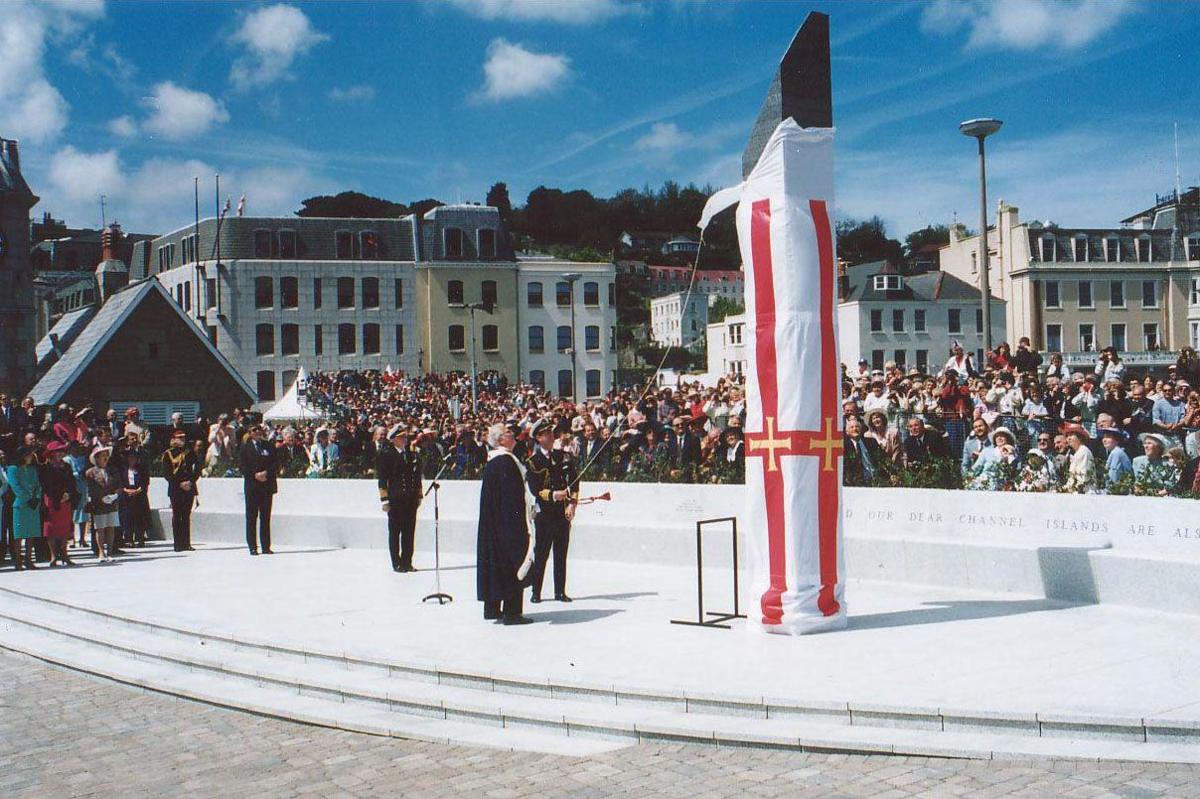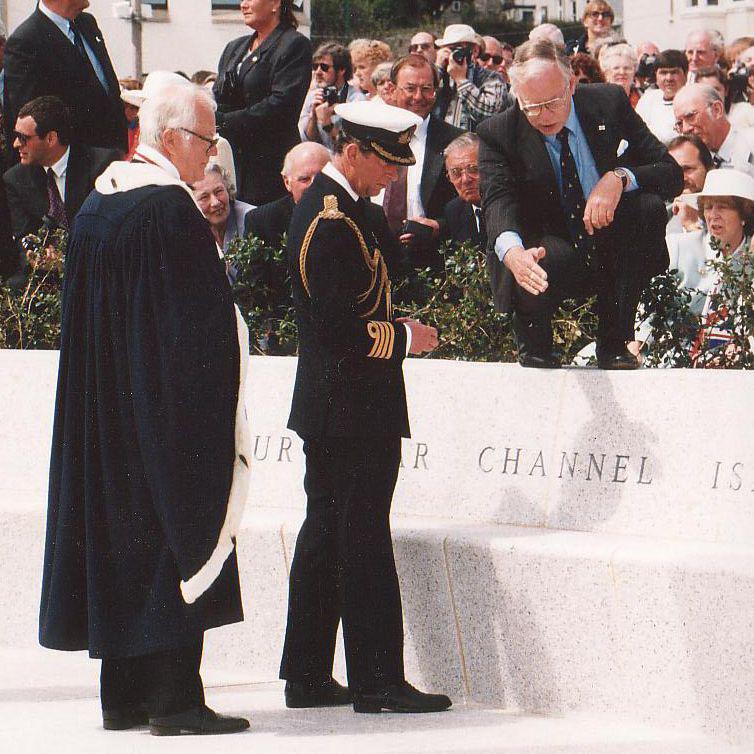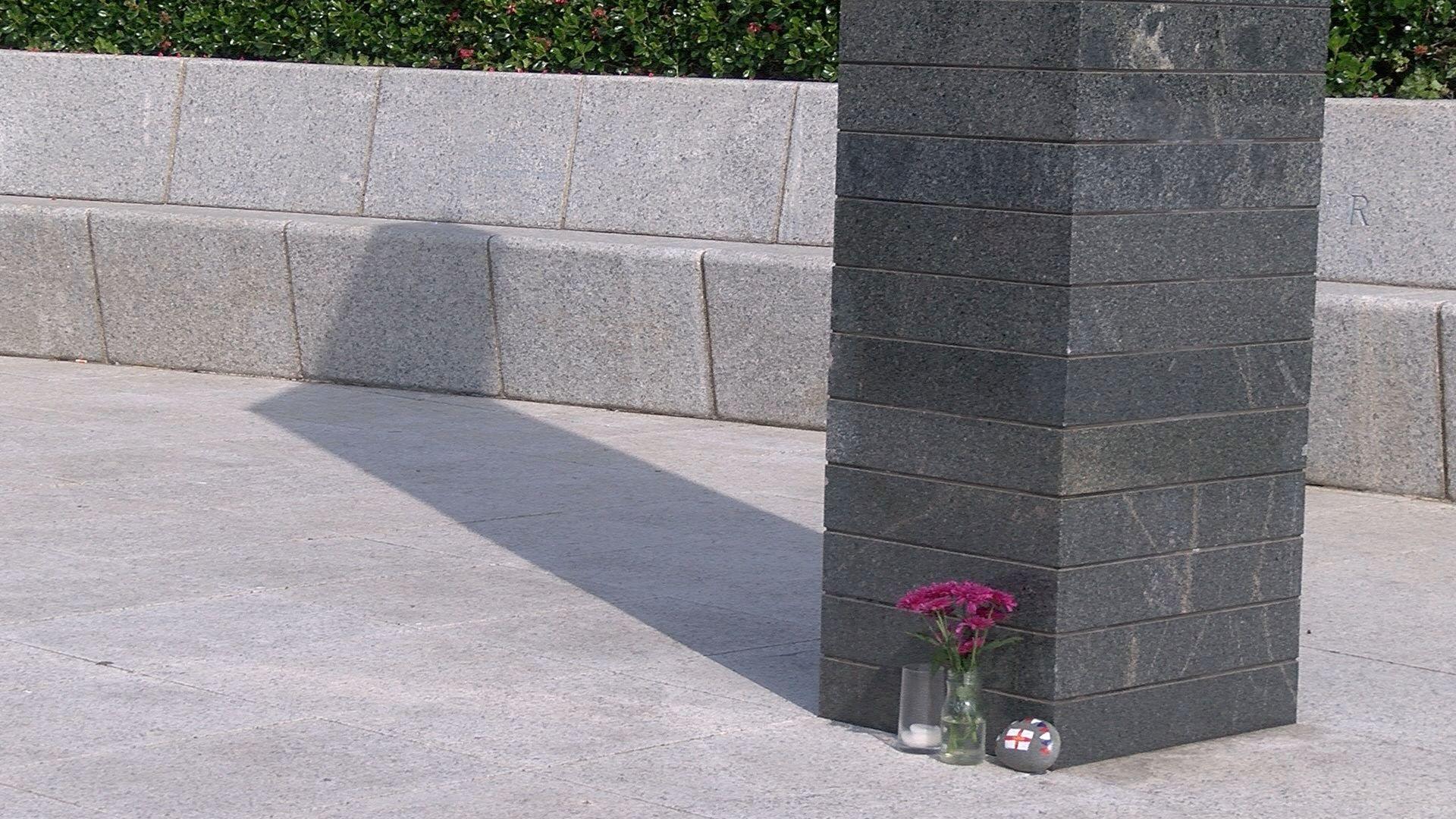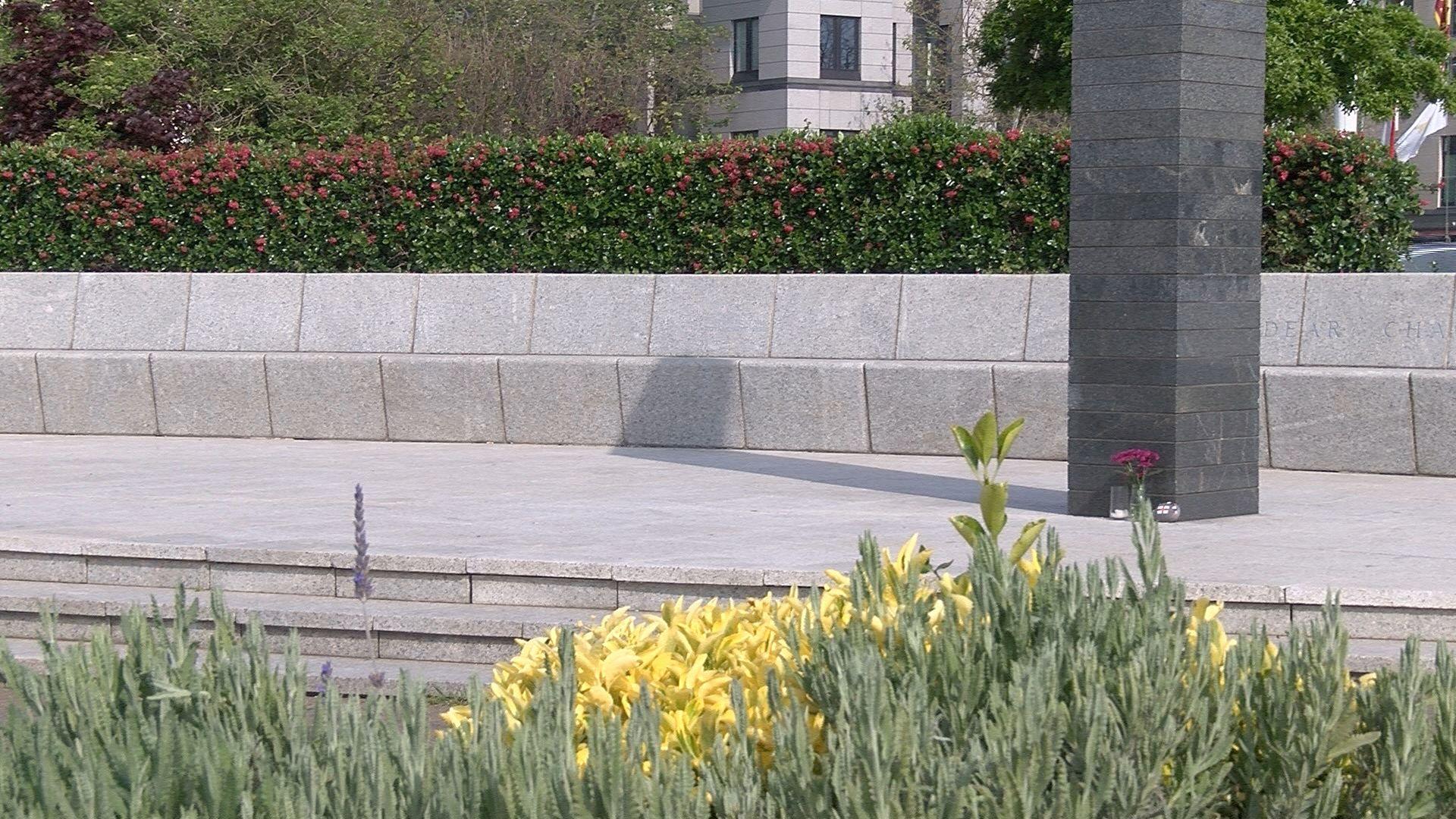What inspired Guernsey's Liberation Monument?
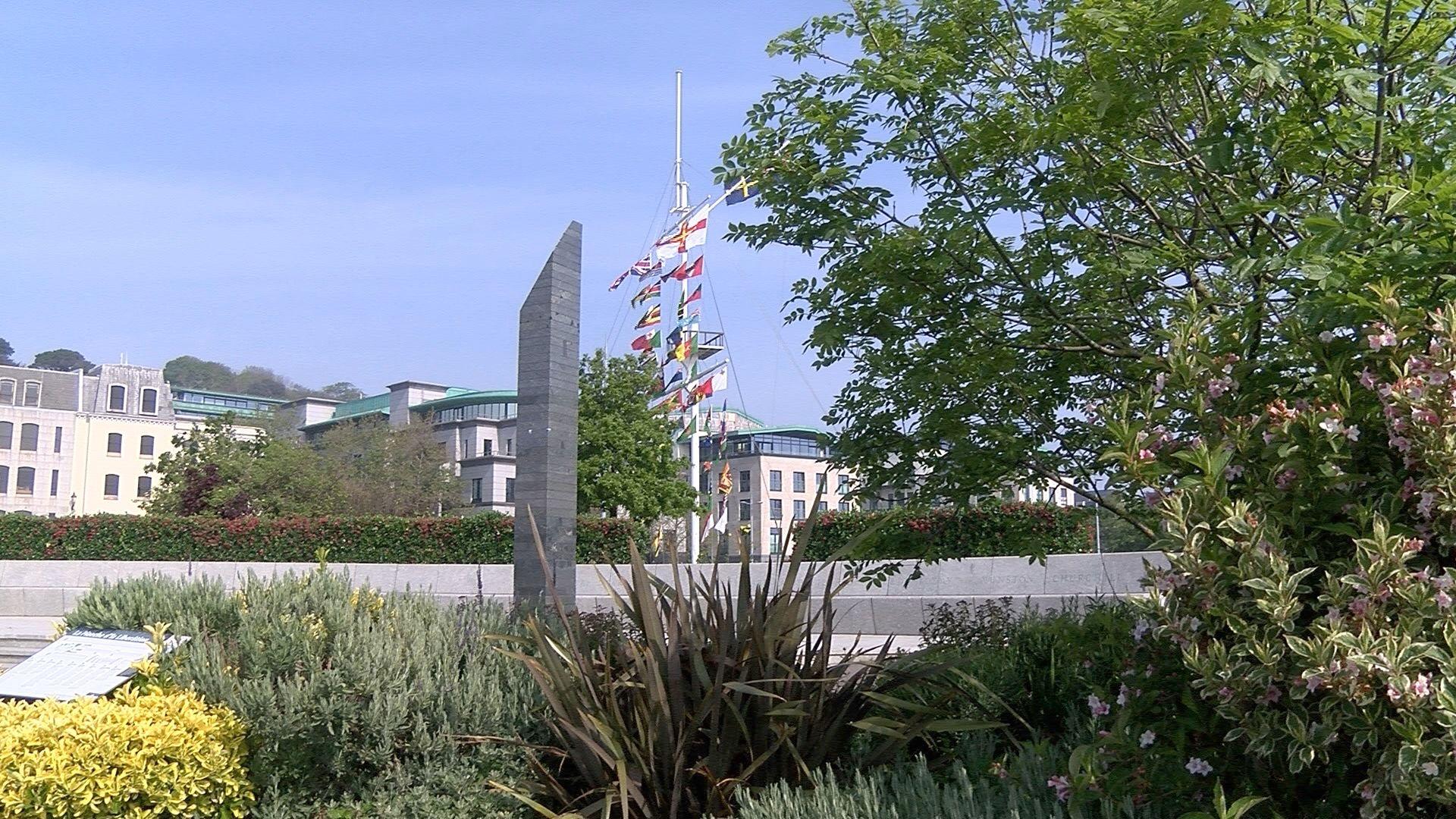
The monument is an obelisk and sundial
- Published
Ahead of Guernsey's 80th anniversary of Liberation, what's the story behind the Liberation Monument?
It was unveiled in 1995 by King Charles, then the Prince of Wales, to celebrate 50 years of the island being liberated.
The monument is an obelisk and sundial and is made of 50 layers of granite with each layer representing a year of freedom since the island was liberated in 1945.
The top layers are sheared away to represent the five years of occupation endured by islanders.
Each year on 9 May the shadow of the sundial precisely points at inscriptions on the back of the seating area, telling the story of the day of Liberation at the times they took place.
How Guernsey's Liberation Monument tells the story of 1945
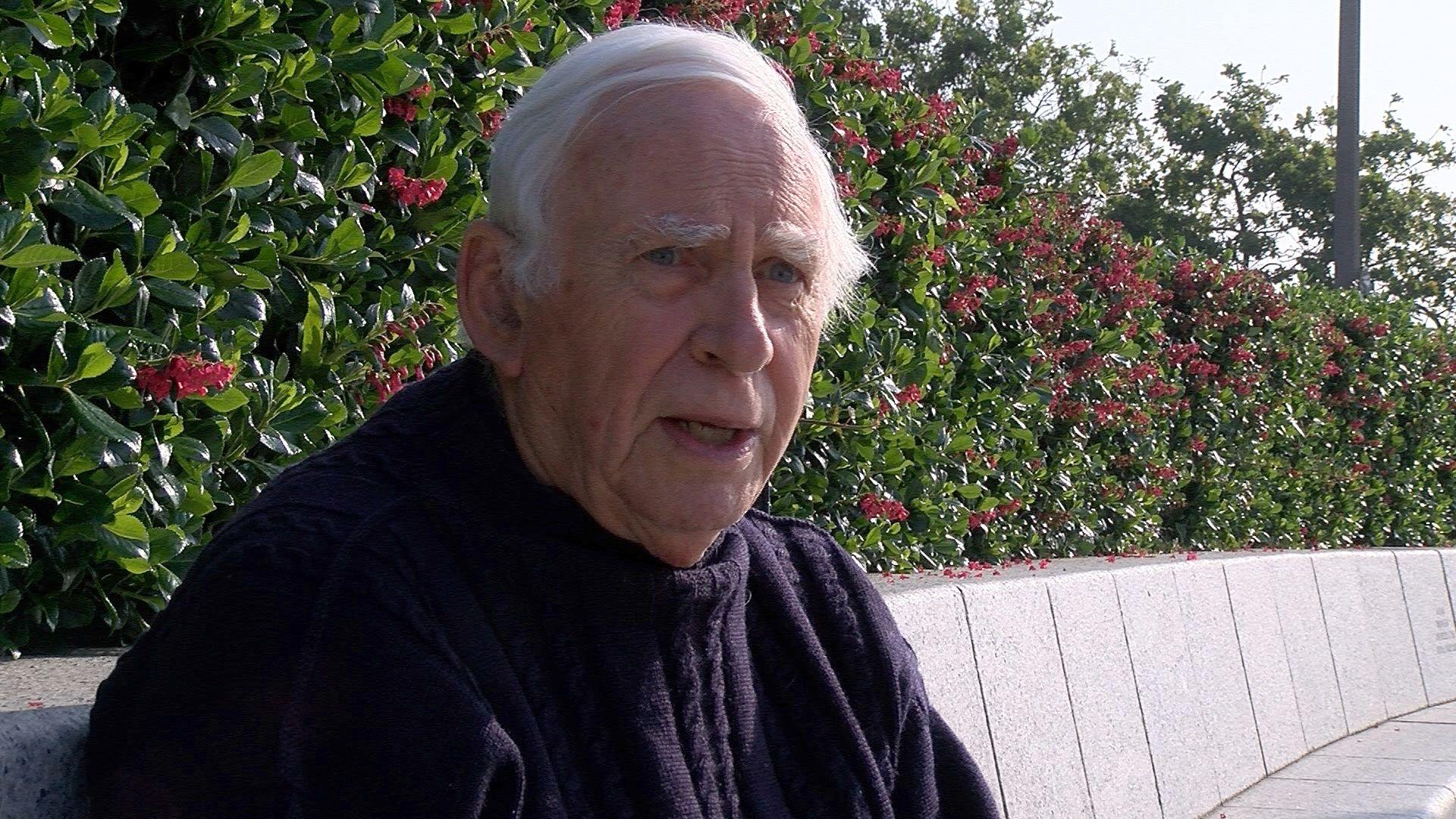
David Le Conte checked the sundial every Liberation Day to check all the work he did was "worth it"
The key astronomical calculations were made by David Le Conte of La Societe Guernesiaise, who was involved with NASA's moon landing, to determine the timing and position of the shadow.
"It's a sundial which only works on one day of the year."
The shadow from the sundial lands on inscriptions on the seating at significant moments from 9 May 1945.
The signing of the surrender of the German forces at 07:15, the landing of the British Liberating Force at 08:00, and the unfurling of the Union Flag at 10:15.
- Image source, David Le Conte
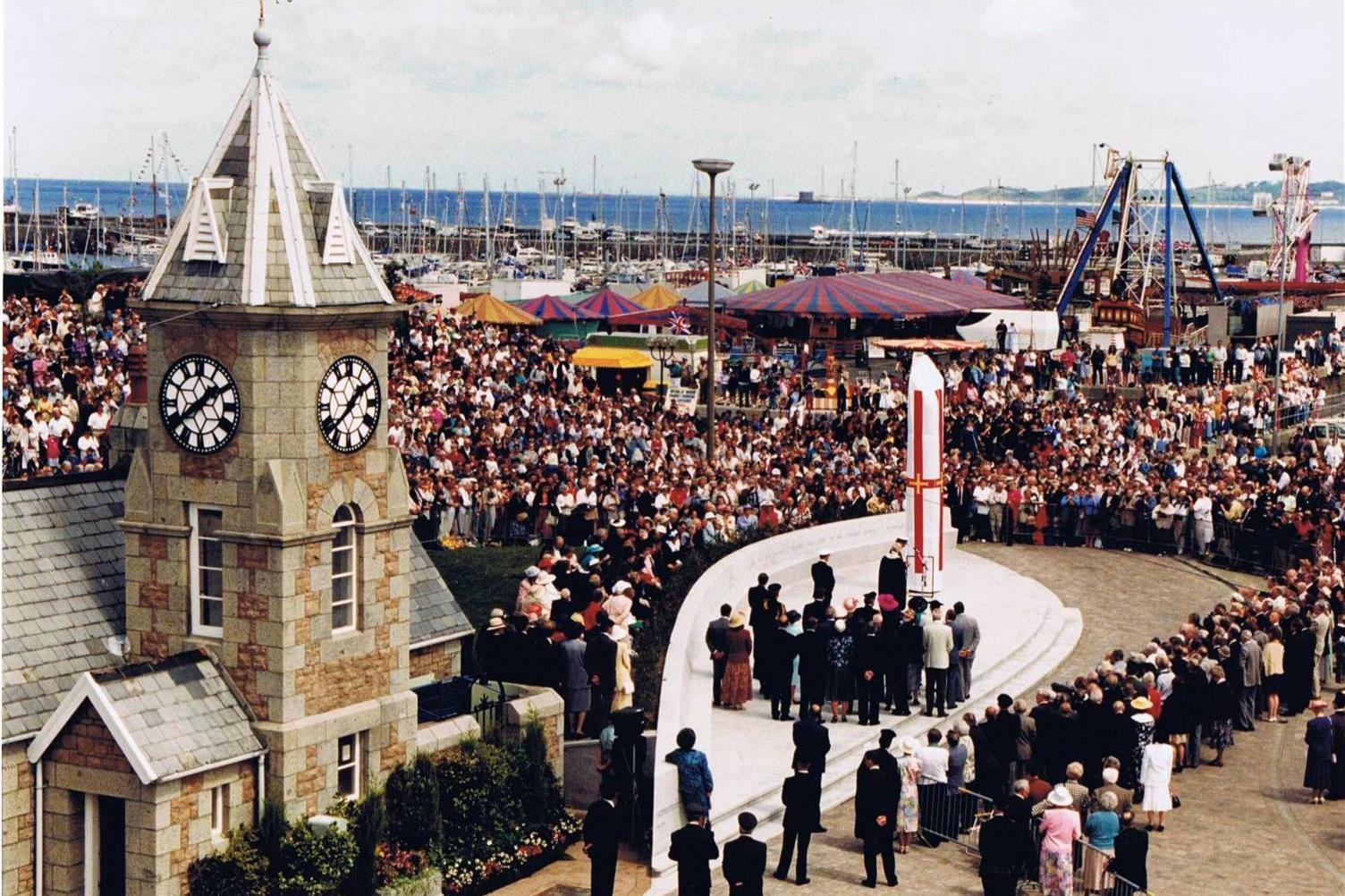
Image caption, Crowds gathered on Liberation Day in 1995 for the unveiling
1 of 5
Mr Le Conte had to invent his own computer software to calculate the position of the sun and the position of the obelisk from various heights.
"I ended up with reams of figures because I thought it would be interesting to calculate how long the monument is going to last for.
The design of the monument is not just specific to one day each year, but also to Guernsey.
"I actually did calculations for 3,000 years into the future just out of interest to see what would happen."
David checked the sundial every year on Liberation Day until his death in August 2020 to "satisfy" himself that all the work he did was "worth it".
Follow BBC Guernsey on X, external and Facebook, external. Send your story ideas to channel.islands@bbc.co.uk, external.
